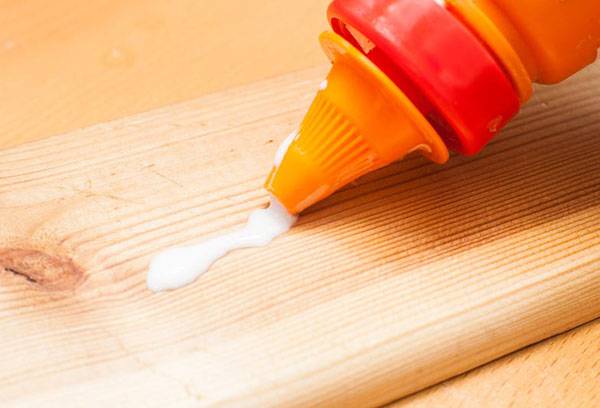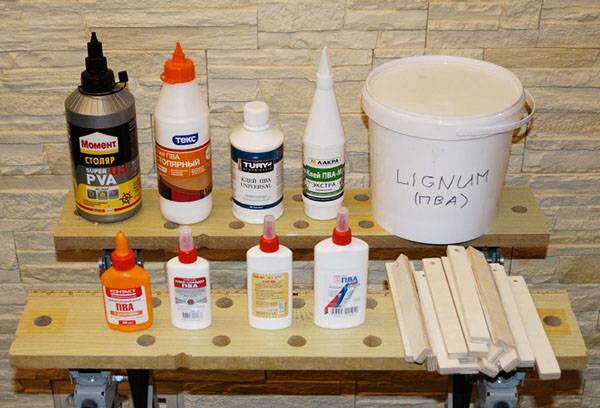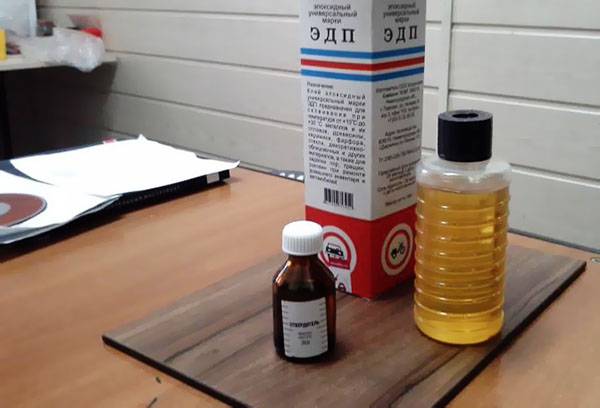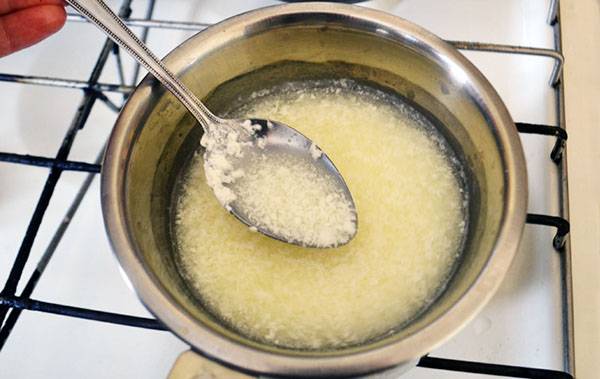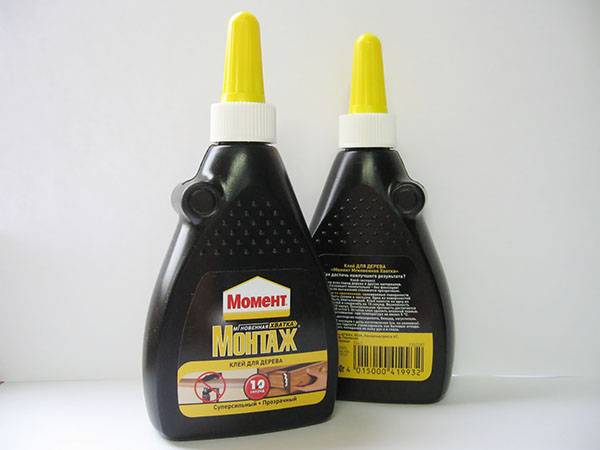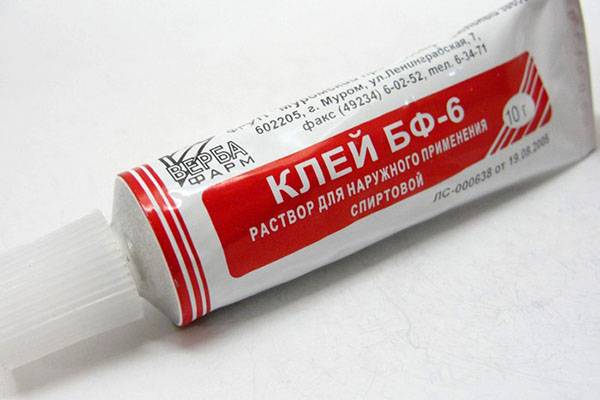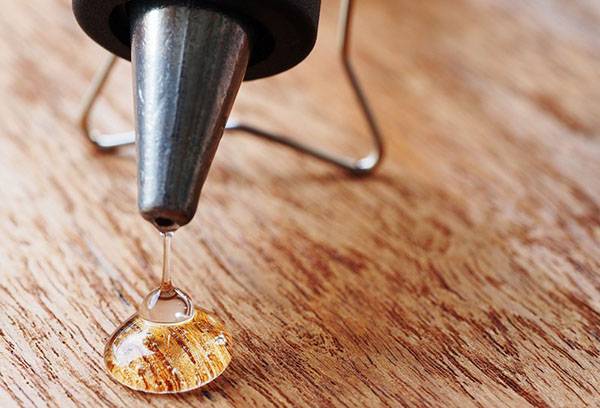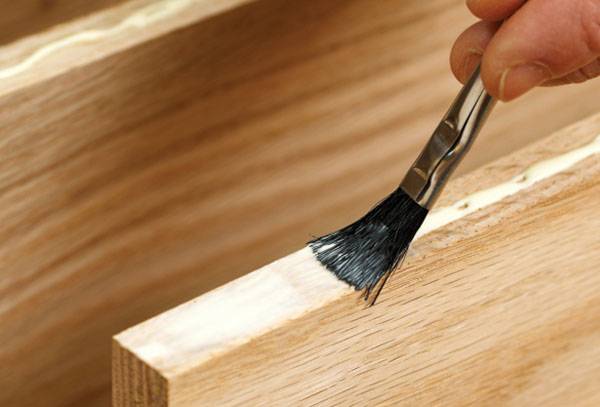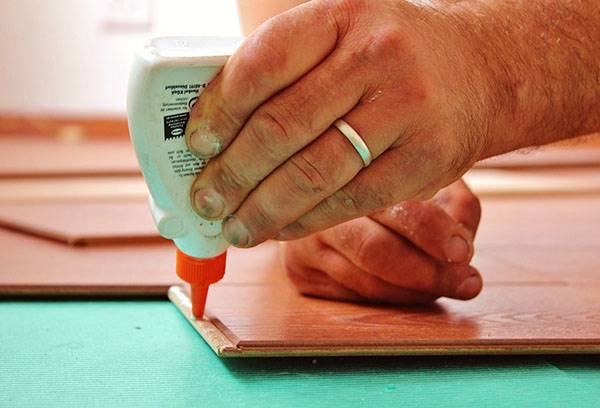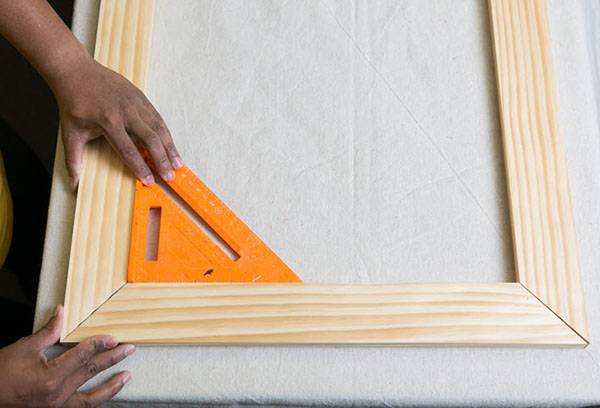How to choose the right glue for wood?
Content:
- The choice of the main properties of the adhesive
- Varieties of wood glue
- PVA glue or compositions based on it
- Two-component epoxy adhesive
- Casein glue
- Cyanoacrylate Compounds
- Glue BF
- High temperature adhesive
- Wood glue
- How to glue wood with wood or other materials?
- General rules for the use of glue when working with wood
When choosing a suitable adhesive for wood, one should take into account the specifics of the upcoming work and pay special attention to the properties and characteristics of the composition. The decisive factors are the types of materials to be glued, the conditions where the work will be carried out and the finished structures used.
The choice of the main properties of the adhesive
There is no universal glue for any kind of work, each has certain properties. To figure out which glue is best for wood and which glue for gluing other materials, you should study the characteristics and composition of the selected product.
What you need to pay attention to:
- degree of moisture resistance - is indicated by the letter D and is divided into classes (2 - minimum, 3 - sufficient, 4 - increased);
- toxicity;
- adhesive strength (kg / cm³) and composition density;
- adhesion to other materials - fabric, metal, plastic, rubber, ceramics, glass;
- complete drying time;
- heat resistance;
- resistance to bacteria and fungi.
The secondary characteristics include color, it can also be different: transparent, white, black or imitating the natural shade of a tree of a certain breed.
Varieties of wood glue
The manufacturers have developed many different compositions for woodwork, and if we turn to the experience of the masters of carpentry, we can distinguish a number of the most suitable types. It should be noted that some types of glue can be divided into several subspecies, each of which has a narrow specialization, a special color or composition.
PVA glue or compositions based on it
PVA glue remains the undisputed leader, many users give it preference, despite hundreds of new products with unique compositions. Glue is produced by almost all brands, and the average price per 1 kg varies from 80 to 400 rubles. The best furniture types of glue are often made on the basis of PVA.
Pros:
- environmental friendliness - the composition does not emit dangerous toxins before or after drying;
- leaves no residue;
- complete drying time - up to 24 hours;
- high adhesion to various materials.
Minus:
- water-based composition is not intended for use in rooms with high humidity.
Tip
Shredded wood chips can be added to PVA glue for better fixation of elements.
Two-component epoxy adhesive
The glue known to many, made on the basis of epoxy resin, is widely used for a variety of purposes, including for joining wooden structures. The kit includes two components: glue and hardener.
Pros:
- high adhesion to all known materials;
- leaves no marks on the product, does not change the color of the tree;
- epoxy glue is very durable and ideal for fixing even moving parts;
- resistant to water, oils and various aggressive solutions;
- possesses an electrical insulating property.
Minuses:
- when using it is necessary to wear protective gloves, the composition can provoke an allergic reaction;
- with little experience using it is very difficult to calculate the proportions, which sometimes leads to cost overruns.
Casein glue
Universal glue is often used to connect small elements in the construction of various models of buildings or vehicles, repair of furniture or interior items.
Pros:
- provides a very strong connection;
- total drying time less than 20 hours;
- more resistant to humidity and high temperature than wood glue for wood.
Minuses:
- complex cooking process - the adhesive powder is mixed with cold water and mixed thoroughly. It will take about 1 hour to bring the adhesive to a state of readiness.
Cyanoacrylate Compounds
Cyanoacrylate mixtures are considered universal and are very popular. Experienced craftsmen have long been convinced of the effectiveness of such compounds. Glue is most often sold in small containers: given that the cost of such goods cannot be called low, they are rationally used for a small amount of work.
Pros:
- high strength;
- minimum setting time - about 10-15 seconds;
- glue does not change the color of products, leaves no residue;
- resistant to various liquids;
- the minimum density of the composition allows it to be used for decorative work or the connection of small parts.
Minuses:
- relatively high cost (for example, Cosmofen second adhesive, 20 g - 120 rubles);
- requires extreme accuracy during operation.
Glue BF
Among the many types of BF glue for wood, two products are suitable: BF2 for internal work and BF4 for outdoor. The multi-purpose compound is suitable for gluing various materials to wood, is easy to use and is sold in almost every specialized store.
Pros:
- BF2 - moisture resistant, BF4 - moisture resistant, frost resistant;
- dries completely in 1 hour;
- Great for gluing metal to wood.
Minuses:
- effective only after careful preparation - products should be well cleaned.
Tip
If the bonding place is heated to 80 ° C, the time of complete drying will be reduced to 15 minutes.
High temperature adhesive
Heat-resistant compositions are highly specialized, they are used when the workpiece is fired or otherwise exposed to high temperatures. Glue does not dry out, does not crack and does not exfoliate.
One of the varieties of high-temperature compositions are adhesive rods. Apply this composition with a glue gun, where the rod gradually melts. The application intensity is user-adjustable.
Wood glue
Wood glue for wood is only suitable for gluing wooden workpieces. Powder glue is poured with water 3-4 cm above the powder level and the mixture is kept for 6 to 12 hours, depending on the manufacturer's recommendations. Then the adhesive composition is brought to a state of readiness in a water bath, mixing thoroughly. In this case, the temperature of the mixture should not exceed 70 ° C. If you add natural drying oil to the composition, the glue acquires waterproof properties. When salicylic acid or borax is added, the glue will be resistant to all types of bacteria, mold or fungal spores.
Pros:
- used for all types of wood;
- possesses sufficient durability.
Minuses:
- A long and relatively complicated cooking process.
How to glue wood with wood or other materials?
Determining how to glue wooden products with glue is quite simple. First of all, it should be analyzed what work will be carried out: gluing wood products or gluing other materials to wood.
You can glue the tree to a tree or other material using any of the types of glue listed above. When working with small parts, it is better to use a quick-drying cyanoacrylate compound or casein glue. When it is necessary to carry out a large amount of work, for example, gluing linoleum to a plywood base, covering wooden furniture with leather or decorating walls, PVA is most suitable. If the structure will be on the street all year round and subjected to temperature extremes - BF4 is needed.
The fastening of wooden elements to each other also implies an average or large amount of work, therefore, apply carpentry or epoxy glue, as well as PVA.The compositions have a neutral color and outwardly invisible, as a result, you can get a solid monolithic design. Which is better to use is a subjective question, these compounds have a big difference in moisture resistance, but similar strength of the compound.
General rules for the use of glue when working with wood
The maximum effect can be achieved if the construction details are properly prepared. The wood should be treated, for this the surface is cleaned with a fine abrasive skin and all dust is removed. Other materials, such as porcelain, glass or plastic, are degreased with acetone.
By technology, glue is applied in an even thin layer on both surfaces. Bonding using BF glue is carried out in two stages with a break of 15 minutes. When using two-component compositions, they are either mixed or one component is applied on one side, the other on the other and fastened.
When joining the end parts, wood glue for wood is applied in two layers, allowing the first to dry slightly. A second is applied on top, they allow the glue to soak in a little, the parts are fastened noticeably. When flat blanks are joined, the mixture is distributed along the fibers in one layer.
After applying the composition, the elements should be pulled together using a press or clamp. If this is not possible, then only quick-drying “second” types of glue are used for bonding. If the composition dries longer than 4 hours, the clamps hold for about 2 hours. Excess glue protruding between the workpieces must be quickly removed until the composition has set.
The last point is compliance with security measures. Sometimes even simple formulations can provoke an allergic reaction. To protect the eyes and skin, it is enough to use rubberized gloves and glasses.
Only popular and relatively safe types of adhesives and mixtures are presented here. There are other types that can do their job well, for example, Moment Stolyar glue is quite effective, but has increased toxicity and is applicable only for technical purposes. Other species often require a long preparation of the mixture or are intended only for production work.
